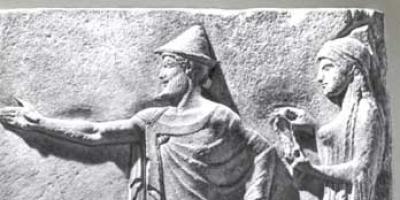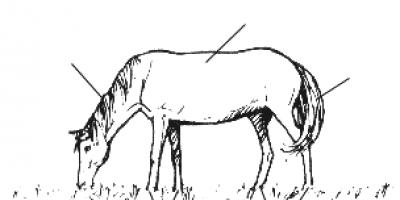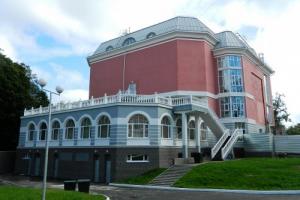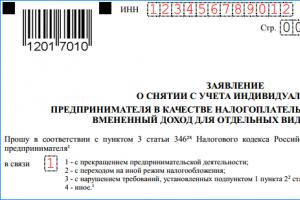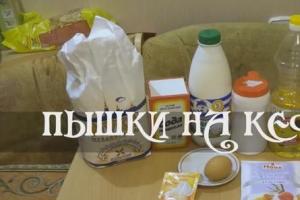Tsagan is one of the most beloved national holidays of our people. Since ancient times, Kalmyks revered it as a holiday of the onset of spring, the awakening of nature. Therefore, when meeting on the days of the Tsagan holiday, the Kalmyks, after the generally accepted greeting, asked the question: “Have you had a good winter?” To which the usual answer was: “Yes, we overwintered well” or “Everything is fine, the cattle also overwintered without losses.”
Tsagan is celebrated two months after Zul, on the first day of the first spring month, and this month is called Tsagan Sar.
Kalmyks were looking forward to this day. Firstly, because apart from holidays the Kalmyks had no more days for fun and meetings. Secondly, with the onset of spring, the difficult winter with piercing winds and snow drifts ended, green grass appeared in the steppe, which means it was possible to drive cattle out to pasture.
The Kalmyks have a legend that nature gives a sign of the coming of spring by the appearance of a gopher from a hole. Many did not believe in him, went to the steppe to check, and were often convinced: as it was, the gopher emerged from the hole.
People took their best clothes out of their chests and dressed themselves, the most delicious dishes were preparing for the holiday to treat the guests. Everything is according to the proverb: “ The best clothes carry it yourself, serve the best food to the guest.”
Tsagan Sar was celebrated by the Kalmyks before and now by the whole world, which is why it is called a national holiday. And everyone tried to celebrate the holiday widely and cheerfully, because there was a belief: as you celebrate spring, you will reap the harvest (meaning, the richer you celebrate, the richer the harvest will be). Therefore, the tables were crowded with delicious and rare dishes.
Children loved the Tsagan Sar holiday very much, because they were dressed beautifully and elegantly, often new clothes were sewn for them on the occasion of the holiday, and they were allowed to visit relatives. And when visiting, they were presented with delicacies and given money. And the children ate plenty of sweets, filled their pockets with them, brought them home, and hid them there, stretching out the sweet holiday for several more days.
They prepared for the holiday long before its onset: they cleaned the house, sewed new outfits, and did a lot of laundry. Before the holiday, women always washed their hair and put on beautiful shivrlg (hair covers) on their braids, which were made of black velvet, although not everyone could afford to buy this expensive material at that time. The fattest, well-fed sheep were chosen from the flock and slaughtered, because it was difficult to even imagine a festive table without meat, and besides, meat is a traditional dish festive table, covered in Tsagan Sar. Equally traditional dish there were also wrestlers who, on the occasion of the holiday, did different types and different shapes. For example, they baked: tselvg, horkha bortsg, ket, zhola, khutsyn tolga. Each type of wrestler carried its own meaning. For example, the Jorja Borcicos tried to bake as many as possible, because it was believed that their number would contribute to the growth of livestock numbers.
The evening before Tsagan Sar, they place a deezh, in which you must put three tselvg, several horkha bortsik, ket, khutsin tolga, zhola bortsg, sweets, and cookies. They light a zul (lamp) and finger their rosary, because on this day, the last day of winter, lunar calendar, is a day of prayer and purification.
The treasure placed in front of the shrine must be eaten within three days, and it must be eaten with the family; it must not be given to strangers.
The name of the holiday “Tsagan” has one translation - white, because the Kalmyks associate everything pure, bright and good with white. There is even a wish: “Have a safe journey for you,” which means wishing you good luck. Milk is white, and therefore the attitude towards it is special, if not respectful.
Finally, the first day of spring arrives - the first day of the month of Tsagan Sar. In the morning of this day, the mother brews Kalmyk tea, which on this day should be especially aromatic and tasty, so milk, butter, and nutmeg are added in full, without sparing. Then the mother takes things out of the chest and hangs them out on a pre-stretched rope to ventilate them, to refresh them in the first spring sun. After which the mother dressed herself up, putting on an elegant dress, and always with a white collar.
By the time the mother makes tea and takes care of the housework, the children wake up. Parents congratulate them on the holiday and kiss them on the right cheek, saying: “Be happy, live long, and next year I will kiss you on the left cheek.” The next year the procedure is repeated in the same order and the same words are pronounced. According to popular belief, this ritual made children live in joyful anticipation of the next holiday, and happy children are less likely to get sick. This ritual is called "tsagalgn".
A special, respectful attitude towards her father-in-law placed the daughter-in-law within strict limits that she was not allowed to cross. She had no right to show her father-in-law open parts of her body, except for her hands and face; the father-in-law, in turn, according to the same customs, had no right to touch his daughter-in-law. But on the day of the Tsagan holiday they had to congratulate each other. And it was done like this: the father-in-law handed it to his daughter-in-law right hand, the daughter-in-law put her hands to her father-in-law's hand, but covered with sleeves, and bowed to him three times.
After performing all the above-mentioned rituals, the family sat down to drink tea. At the same time, the eldest in the family had to say yoryal, congratulating everyone on the advent of Tsagan, wishing the family happiness, health and long life.
And after morning tea, the Kalmyks went to visit themselves or received guests at home. Among the guests were relatives, friends, and neighbors. And everything that was most delicious in the house was presented to the guests so that they would go home full and satisfied, so that they would say from the heart a yoryal calling prosperity to your home.
In Tsagan, children must visit their parents’ house and congratulate them on the holiday. In former times, a daughter-in-law, going to the house of her husband’s parents, carried with her tea already brewed at home and, entering her father-in-law’s house, poured it into bowls and treated her. And the old people said yoryal in response.
Tsagan Sar lasts for a whole month, so you could visit every day, throughout the month.
04.03.2011 22:48
Tsagan is one of the most beloved national holidays of our people. Since ancient times, Kalmyks revered it as a holiday of the onset of spring, the awakening of nature. Therefore, when meeting on the days of the Tsagan holiday, the Kalmyks, after the generally accepted greeting, asked the question: “Have you had a good winter?” To which the usual answer was: “Yes, we overwintered well” or “Everything is fine, the cattle also overwintered without losses.”
Tsagan is celebrated two months after Zul, on the first day of the first spring month, and this month is called Tsagan Sar.
Kalmyks were looking forward to this day. Firstly, because apart from holidays, Kalmyks had no more days for fun and meetings. Secondly, with the onset of spring, the difficult winter with piercing winds and snow drifts ended, green grass appeared in the steppe, which means it was possible to drive cattle out to pasture.
The Kalmyks have a legend that nature gives a sign of the coming of spring by the appearance of a gopher from a hole. Many did not believe in him, went to the steppe to check, and were often convinced: as it was, the gopher emerged from the hole.
People took out their best clothes from their chests and dressed themselves with them; the most delicious dishes were prepared for the holiday to treat the guests. Everything is according to the proverb: “Wear the best clothes yourself, serve the best food to the guest.”
Tsagan Sar was celebrated by the Kalmyks before and now by the whole world, which is why it is called a national holiday. And everyone tried to celebrate the holiday widely and cheerfully, because there was a belief: as you celebrate spring, you will reap the harvest (meaning, the richer you celebrate, the richer the harvest will be). Therefore, the tables were crowded with delicious and rare dishes.
Children loved the Tsagan Sar holiday very much, because they were dressed beautifully and elegantly, often new clothes were sewn for them on the occasion of the holiday, and they were allowed to visit relatives. And when visiting, they were presented with delicacies and given money. And the children ate plenty of sweets, filled their pockets with them, brought them home, and hid them there, stretching out the sweet holiday for several more days.
They prepared for the holiday long before its onset: they cleaned the house, sewed new outfits, and did a lot of laundry. Before the holiday, women always washed their hair and put on beautiful shivrlg (hair covers) on their braids, which were made of black velvet, although not everyone could afford to buy this expensive material at that time. The fattest, well-fed sheep were chosen from the flock and slaughtered, because it was difficult to even imagine a festive table without meat, and besides, meat is a traditional dish for the festive table set in Tsagan Sar. An equally traditional dish were bortsiki, which were made in different types and in different shapes on the occasion of the holiday. For example, they baked: tselvg, horkha bortsg, ket, zhola, khutsyn tolga. Each type of wrestler carried its own meaning. For example, the Jorja Borcicos tried to bake as many as possible, because it was believed that their number would contribute to the growth of livestock numbers.
The evening before Tsagan Sar, they place a deezh, in which you must put three tselvg, several horkha bortsik, ket, khutsin tolga, zhola bortsg, sweets, and cookies. They light a zul (lamp) and touch their rosary, because on this day, the last day of winter according to the lunar calendar, is a day of prayer and purification.
The treasure placed in front of the shrine must be eaten within three days, and it must be eaten with the family; it must not be given to strangers.
The name of the holiday “Tsagan” has one translation - white, because the Kalmyks associate everything pure, bright and good with white. There is even a wish: “Have a safe journey for you,” which means wishing you good luck. Milk is white, and therefore the attitude towards it is special, if not respectful.
Finally, the first day of spring arrives - the first day of the month of Tsagan Sar. In the morning of this day, the mother brews Kalmyk tea, which on this day should be especially aromatic and tasty, so milk, butter, nutmeg They give in full, without sparing. Then the mother takes things out of the chest and hangs them out on a pre-stretched rope to ventilate them, to refresh them in the first spring sun. After which the mother dressed herself up, putting on an elegant dress, and always with a white collar.
By the time the mother makes tea and takes care of the housework, the children wake up. Parents congratulate them on the holiday and kiss them on the right cheek, saying: “Be happy, live long, and next year I will kiss you on the left cheek.” The next year the procedure is repeated in the same order and the same words are pronounced. According to popular belief, this ritual made children live in joyful anticipation of the next holiday, and happy children are less likely to get sick. This ritual is called "tsagalgn".
A special, respectful attitude towards her father-in-law placed the daughter-in-law within strict limits that she was not allowed to cross. She had no right to show her father-in-law open parts of her body, except for her hands and face; the father-in-law, in turn, according to the same customs, had no right to touch his daughter-in-law. But on the day of the Tsagan holiday they had to congratulate each other. And it was done like this: the father-in-law extended his right hand to his daughter-in-law, while the daughter-in-law put her hands, but covered with sleeves, to her father-in-law’s hand, and bowed to him three times.
After performing all the above-mentioned rituals, the family sat down to drink tea. At the same time, the eldest in the family had to say yoryal, congratulating everyone on the advent of Tsagan, wishing the family happiness, health and long life.
And after morning tea, the Kalmyks went to visit themselves or received guests at home. Among the guests were relatives, friends, and neighbors. And everything that was most delicious in the house was presented to the guests so that they would go home full and satisfied, so that they would say from the heart a yoryal calling prosperity to your home.
In Tsagan, children must visit their parents’ house and congratulate them on the holiday. In former times, a daughter-in-law, going to the house of her husband’s parents, carried with her tea already brewed at home and, entering her father-in-law’s house, poured it into bowls and treated her. And the old people said yoryal in response.
Tsagan Sar lasts for a whole month, so you could visit every day, throughout the month.
Chitanov Bosch
The most solemn and important holiday of the Kalmyks is Tsagan Sar. The main content of the holiday is the welcoming of spring, the beginning of the time of migration to new pastures. Tsagan Sar began on the first day of the first spring month of Lu (dragon) and lasted the entire month, but the main events took place in the first eight days.
Download:
Preview:
Ministry of Education, Science and Culture of the Republic of Kalmykia
Education Department of the Yashkul Regional Medical Education Administration
Municipal educational institution "Khartolga secondary school"
Regional competition of creative and research work dedicated to the Kalmyk folk holiday Tsagan Sar
Topic: “Tsagan Sar - Kalmyk spring holiday”
Head: Chetyrov U.B. - history teacher and
Social studies.
Khar Tolga village
2011
TSAGAN SAR - KALMYK SPRING HOLIDAY
The most solemn and important holiday of the Kalmyks is Tsahan Sar (White Month). The name had several meanings: white, happy, month of greetings, congratulations. The main content of the holiday is the welcoming of spring, the beginning of the time of migration to new pastures. It was considered a great sin to remain in the same place after the holiday for longer than seven to eight days. Tsahan Sar began on the first day of the first spring month of Lu (dragon) and lasted the entire month, but the main events took place in the first seven to eight days. They prepared for the celebrations in advance, slaughtering livestock for future use, since it was forbidden to do this directly on the days of the holiday. Celebrations took place in every home. They hung new outfits on the line and shook out all the clothes. They cooked meat - lamb, beef or horse meat. An important point the holiday was the preparation of a national flour dish - boortsg (type of flatbread). Boortsg prepared from rich unleavened dough and fried in boiling fat. They made up sets“deeҗ boortsg” for offering “deeҗ” - first portion of burkhanam and gift"gerə belg" - for giving to relatives during holiday visits. Form boortsg , included in the sets, had a symbolic, sometimes deep meaning. So, boortsg "khuts", sculpted in the form of a figurine of a ram, meant the wish for a large offspring of this type of livestock and reflected to some extent the ancient ritual of animal sacrifice, that is, they replaced the real sacrifice with its image. Performed a similar role boortsg "whale", the shape of which resembled part of a horse's entrails, and boortsg “өvrtə tokhsh”, symbolizing cattle. The wish for a rich offspring - the most important thing for a cattle breeder - is embedded in the symbolism of many forms. This meaning was also carried boortsg "moshkmr" - twisted, reminiscent of the national dish of boiled lamb entrails, small “horjas” (literal translation: insects). Boortsg “Khola”, depicting the occasion was supposed to invoke endless luck. And bringing boortsg "shoshhr", expressed the desire to live as a united family, as well as to have protection from enemies. Among the Don Kalmyks we especially loved, there was a view boortsg “burkhn zala”, or “tsatsg”, in the form of a brush, symbolizing a lotus. He was placed at the top“Deeҗ boortsg.” But the most important thing was to make boortsg in the form of the sun. These are large flatbreads called in some ethnic groups"havtha", in others - "tselvg". "Havtha" - a solid flatbread with tucks along the edges or with four holes in the center, boortsg "tselvg" The edges are smooth, and small holes are located radially around their circumference."Havtha" or "tselvg" prepared first and invariably served as deeҗ . All the other ones listed above were also included in this set. boortsg . True, the sets differed in different subethnic groups. Cooking"gerə belg", one was strung on a white thread“khavtha” or “tselvg”, one “Khola”, one “moshkmr”, three “shoshhr”, one “kit”, six “өvrtə tokhsh”, and one “khuts” . Large ones were made for adults boortsg , for smaller children.
Early in the morning on the day of the holiday, they performed the “zulg orgh” ritual: having crossed the threshold of the tent, the owner of the house sprinkled the first cup of freshly brewed tea around;"Tsatsl" or sprinkling - a kind of offering to the ancestors and the White Elder - Tsahan aav . Congratulations took place in the house - the greeter got down on his right knee, brought his folded palms to his forehead and said the traditional greeting: “Uvləs sən harvt!” (“We came out of winter safely!”). In a day Tsagan Cap people pronounce good wishes - yorel:
Oh, khairkhan, Okon Tengri, many Almighty Ones!
Let us appease the spirit of Okon Tengri,
Let people live in peace and prosperity!
We will all celebrate Tsagan Sar together,
Let us bow to Okon Tengri,
While preparing hot food,
Let's dedicate the deeji to Okon Tengri,
May there be plenty of food and drink,
We will always live in peace and prosperity,
Without itching and bad weather, without poverty and disease.
We will emerge from winter completely safe with people and livestock.
We will greet each other: “Mende!”
Let's live without fear and disease!
At all times we will observe the laws and customs of our ancestors!
May everything you plan come true
In accordance with what has been said!
Let us appease our Burkhans,
Let us appease the spirits of earth and water.
Let the eul lit on this holiday
It will illuminate us!
Live in prosperity
May the Almighty protect you!
And we, the elderly, who have lived our lives,
We will look at your happiness
We will live long
Teach young people the laws of their ancestors,
Live without showing bad traits.
Khairkhan! Let's meet on this holiday Tsagan Sara,
When the earth has already thawed after a long winter!
Visiting is an indispensable part of any holiday, this is especially typical for Tsahan Sara. Even those living far away these days came to meet their relatives. There were certain norms: the order of visits; the nature of the gifts depended on the person's position. They visited their parents and maternal relatives - they always enjoyed special veneration; daughters-in-law came to the house of their husband's parents with their children to worship their ancestors and patrons. An indispensable element of holiday gifts was a bunch boortsg .
The etiquette of the holiday also included symbolism of gestures based on age. Peers and people of the same social rank extended both hands to each other, wrapping them around the right arm of the person being greeted up to the elbow on both sides. The elder gave one hand to the younger, who clasped it with both hands. At the same time, women who wore traditionally cut formal clothes for the holiday lowered the cuffs of their sleeves, thus covering their hands. On the one hand, hiding your hands is a tribute to the tradition of modest behavior. On the other hand, thanks to this, the woman’s costume acquired a complete look, because in the complex symbolism of a woman’s costume, every detail was significant, and the cut of the dress included sleeves covering the hands. According to researchers, the sleeve of a woman's dress"terlg" with lowered cuffs is semantically associated with the image of a deer; the top dress"tsegdg" symbolizes a swan, especially revered by the Mongolian peoples. Traditional costume married woman included both dresses, and the girl's Kalmyk dress, cut with a sleeve similar to the sleeve"terlg" , usually trimmed with lace and fringe, which is also apparently associated with ornithozoomorphic symbolism.
According to the Buddhist tradition, Tsahan Sar was celebrated for 15 days, during which services were held daily in temples. This holiday (in Tibet it is called Monlam) was established by Tsonghawa in 1409 in honor of the victory of the Buddha over false teachers and to “restore” the 500th anniversary of the existence of Buddhism, lost allegedly due to the admission of women to the monastic order. The Kalmyks, celebrating Tsahan Sar, recognized only the first part of the motivation of the Tibetan Monlam. Various mythological events were associated with the days of Tsahan Sara:
1) on the first of the month of the dragon, Buddha entered into a dispute with the “six unfaithful teachers” and waged it for 15 days, ending with a brilliant victory and a display of miracles;
2) at the same time, the goddess Okn Tengr, called Lhamo in Tibet, returned from the country of evil spirits, pacifying the inhabitants of the hostile country and fleeing from them;
3) the dragon king Luusun Khan, who had been inactive all winter at the bottom of the ocean, raises water from the rivers to the sky, coming to the surface;
4) the days of Tsahan Sara were also popularly associated with the salvation of the world from the son of Okn Tengr, born from a marriage with the king of the Mangus, since the baby, having turned into a giant, could eventually destroy the entire human race. That is why, during the feast in honor of Tsahan Sara, a sacrifice was made to the fire (hearth), which was perceived as a sacrifice to Okn Tengr. After three times of good wishes, boiled meat was eaten at the feast, and each dining companion was allocated a certain portion.
Before the onset of the first day of the holiday, a service was held in the temple all night dedicated to the gods-defenders of the faith - “Dokshits” in order to appease them. Moreover, if in some khuruls this service, called “khuuchn khural,” lasted one day, then in others it could last the entire previous week. The main event usually took place at dawn, with a huge crowd of people. A sacrificial table was placed on the south-eastern side of the khurul tent or temple. The ceremonial procession passed from the khurul (temple) along white felt mats -"shirdg" - to the table, where an icon with the image of the Tengr Window was placed and a prayer was performed, after which everyone returned to the temple to eat consecrated food. At sunrise, one of the Gelyungs (clergy) ran towards the khurul (temple) tent, carrying in his hands the image of the Tengr Window, which was supposed to symbolize the arrival of the goddess. The child depicted in the icon was symbolically “put to death” as the personification of evil, by blows from two copper plates"tsang". In different khuruls, the scene of the meeting of Okn Tengr could vary, but the meaning of the ceremonies - the propitiation of the goddess - remained. After completing the service and eating the consecrated food, the clergy blessed the laity, touching their shoulders with a ribbon"orkmҗ" and saying good wishes: “Uvləs sən harvt!” (“We came out of winter safely!”)
The spirit of unity, goodwill, and an atmosphere of community of people reigned in the celebration of Tsahan Sara.
References.
- Bakaeva E. P. Buddhism in Kalmykia. Elista, 2007.
- Bakaeva. E.P. Pre-Buddhist beliefs of the Kalmyks - Elista, 2003.
- Dushan U. Customs and rituals of pre-revolutionary Kalmykia // Ethnographic collection. No. 1. – Elista, 1976.
- Olzeeva. S.Z. Kalmyk folk traditions. – Elista, 2007.
- Erdniev U.E. Kalmyks - Elista, 1985.
MONGOLIAN HOLIDAYS
WHITE MONTH (TSAGAAN-SAR)
Tsagaan sar– this is both the New Year’s Eve and the first month of the year, which opens the spring-summer season, the long-awaited end of wintering and migration to spring pastures. Translated from Mongolian, “Tsagaan sar” means White Moon. Tsagaan Sar has long occupied an important place in the traditional life of the Mongols, carrying a colossal emotional charge. It gives ideas about good and evil, and is perceived as important date year as a special sacred time. The name White Month is associated with the symbolism of the color white as a symbol of happiness and goodness among the Mongols, as well as the use of a large number of milk products.
There is no fixed date for the start of the New Year according to the lunar calendar. It shifts every time and can fall from January to early March, but most often it occurs in February. Until 1267, the Mongols celebrated Tsagaan Sar in September. For the ancient Mongols, the new year began in the fall.
According to some sources, spring has been considered the beginning of the year since the reign of Genghis Khan. As written in the writings of Lama Agvaaniyam. Genghis conquered Tibet in the spring. Many princes of the conquered country. and not only they, but also other tribes and nationalities recognized Genghis as their emperor and organized a big holiday in honor of this event. Upon arrival at home, Chinggis again celebrated the beginning of the year. Since then, the tradition of celebrating the New Year in the spring has been established. The sage Sumbe Khambo Ishbalzhir introduced his own calendar, which he called “Tutsbuyant”, which all monasteries in Mongolia still follow.
According to other sources, the holiday was moved to February only under Kublai, the grandson of Genghis Khan, the first emperor of the Mongol Yuan dynasty, which ruled in China from 1271-1368. Evidence of the celebration of Tsagaan Sar was left in his notes by the Venetian traveler Marco Polo, who was present at the celebration of the White Month at the Beijing court in the 13th century.
With the establishment of the country's autonomy and sovereignty in 1911, Bogdo Khaan declared this calendar to be the state calendar. "Tugsbuyant" became both a religious and a state calendar. During the years of repression, "Tugsbuyant" was the calendar of livestock breeders, but since 1944, when the Gandan monastery was revived and the need arose to conduct services according to the established order, the "Tugsbuyant" calendar was revived. There was a datsan in which astrology was taught as a science and its graduates were responsible for writing the lunar calendar. During the years of socialism Tsagaan sar took place under a different name, consonant with the ideology of that time - the holiday of the “livestock breeder” according to the same calendar.
After the adoption of Buddhism and the introduction of the lamas of their calendar, the white month was moved to the end of winter and combined with the date of the victory of the founder of Buddhism over other schools. White color for the Mongols it symbolizes prosperity, and white foods are required for celebration Tsagaan Sarah.
Tsagaan sar - New Year according to the lunar calendar, that is, according to eastern horoscope, celebrated on the first day of spring. According to this calendar, it falls on different years on different days and even months. Depending on the location of the moon in a particular zodiac, astrologers use an algorithm to calculate the first day of spring or the day of Tsagaan Sara. As the astrologers of the Gandantegchlen monastery say, the most correct and suitable astrology for Mongolia is Tugs Buyant. It was developed by the famous astrologer lamas Sumbe Khamba Ishbalzhir and Luvsandanzanzhantsan, who lived in the 18th century, in relation to the climatic conditions of our country. After all, yellow or, as it is also called, Chinese astrology corresponds to the climatic conditions of China and other countries of North and Southeast Asia. The climate there is warmer than ours, so spring comes much earlier.
Traditionally, on New Year's Eve, the most respected and revered lamas make astrological forecasts for the country's residents for the coming year. On the eve of the New Year, a cleansing ritual and a special prayer service are performed in churches and datsans. The main services take place in the largest Buddhist monastery, Gandantegchlen. Services lasting 15 days make up the New Year's prayer service. It includes a service in honor of deities, a ritual for removing obstacles (held the day before the end of the old year), a prayer service in honor of the miracles performed by the Buddha to spread the sacred teachings, wishes for peace and prosperity, and other rituals. Many residents of the capital these days are trying to get to churches to pray for happiness and good luck in the coming year for themselves and their families.
From the 15th-16th centuries, as Buddhism spread and strengthened in Mongolia, this holiday was sacralized on the occasion of the memory of the performance of various miracles by Buddha Shigamuni on these days as proof of the truth of the faith he preached and the divinity of its origin. On the eve of the holiday and the first two weeks, great khurals are celebrated in the monasteries of Mongolia. e. Buddhist services/. They pray for a happy new year. After the prayer service, fires are lit, in the flames of which old things are burned and sacrifices are made to the fire.
The celebration of the White Month consists of three main parts: the pre-holiday preparations, the last day of the old year and the first days of the white month and the rest of the white month. On the pre-holiday days, the Mongols clean up all the rubbish and get rid of accumulated dirt and rubbish. Women sew a new deel (traditional Mongolian robe) for all members of their family. They also try to pay off all debts, since it is considered unfavorable to celebrate the New Year with debts.
In addition, the Mongols prepare various treats and gifts for guests in advance. The Tsagaan Sar treat is a real feast, since the Mongols believe that it is during Tsagaan Sar that a person should eat his fill. Traditional Mongolian food during Tsagaan Sar is manti and dumplings, a whole boiled rump of a fat sheep with its head, traditional bast-shaped shortcakes - ul boov with sweets, rice with raisins. There is also a large assortment of products made from milk: “Bislag” cheese, “Arul” dried cottage cheese, “Tarak” curdled milk, “Uryum” foam, “Arhi” milk vodka, “Ayrag” kumis.
On the eve of Tsagaan Sarah Houses are being cleaned extensively. On New Year's Eve, every family bids farewell to the outgoing year - "bituuleg". People must pay off all their debts, especially those that can be counted, for example. If you were in a quarrel with someone, didn’t get along with someone, offended someone, then exchanging a “chooreg” (a snuff box with snuff) is intended to improve your relationship. With this action, you seem to ask each other for forgiveness. That is, you need to enter the New Year as purified as possible, leaving all the bad things behind.
The celebration of Tsagaan Sar begins on the last day of the old year, which is called “bitun”. “Bituun” means “closed”. In “bitun”, every Mongol should be at home, not go to visit and eat to the full of closed food, i.e. manti and dumplings. It is also believed that people over 13 years of age should not sleep during “bituun”, since the Buddhist goddess Lham, flying around the entire planet on her horse that day, can count the person who fell asleep among the dead. In the evening, on New Year's Eve, every Mongolian family holds a bituuleg - farewell to the passing year. On the last evening of the passing year, children gather at their parents' hearth to spend the old year and celebrate the new year together over a generous meal. TO New Year's table They prepare the rump of a fatty sheep, buuz (manti), dairy and flour dishes. The Mongolian New Year's feast is a whole ritual, as ancient as the tradition of celebrating Tsagaan Sar. In Bituun it is customary to eat to your fill. The feast had its own characteristics. The old people were located in the northern part of the home, where the most honored guests were usually seated. Younger men are on the right side, women are on the left.
Also, the Mongols put 3 transparent pieces above the door of the yurt in “bitun”. river ice- this is a drink for the goddess’s horse, and weeds and thorns on the left ceiling of the yurt so that evil spirits cannot enter the house. On the last day of the old year, many actively visit Buddhist monasteries and perform a ritual of cleansing from the sins of the outgoing year. The redemptive and cleansing functions of such New Year's prayers are enhanced by the idea that the transition point from one year to another is a special, sacred time, a time when there is a break between good and evil.
The New Year celebration begins not at midnight, as is customary here, but early in the morning, on the first day of the new year. The first day of the new year according to the lunar calendar begins early in the morning from 3 to 5 o'clock. On the first morning of the New Year, at sunrise, family members dress in everything new and congratulate first the elders in the family, then the neighbors. However, according to Mongolian custom, spouses do not exchange greetings. This morning the hostess offers the first cup to the gods. Then they visit their older relatives, performing the “zolgokh” ritual, in which the younger one stretches out his hands, palms up, and supports the older one under the elbows, and he, in turn, puts his outstretched hands with his palms down. The ritual is performed, as a rule, in national clothes, and men must have a headdress on their heads. When all the rituals are completed, it is customary to visit, exchange congratulations and gifts, and feast
The festive feast begins with a lamb rump, which the owner of the house hands over in thin pieces strictly according to the rules. The more plentiful the New Year's table is, the more prosperous the coming year will be. It is considered a good omen if there are guests in the yurt. Each guest, while drinking wine, must express a wish for happiness to the host. A large assortment of products made from milk is displayed on the table: “Bislag” cheese, “Arul” dried cottage cheese, “Tarak” curdled milk, “Uryum” foam, “Arhi” milk vodka, “Ayrag” kumiss, etc. In addition to treats, the hosts give small gifts to guests and sweets to children.
And hadag for the Mongols is the most best gift. Hadags come in different lengths, colors, and patterns. Hadag, which is called Ayush has images of people, is given to the most respected people, parents or the eldest. Folded hadag is served with a bow open side to the receiver. The one who received the hadag also bows respectfully and carefully folds it and keeps it with him. Hadag is the symbolic pinnacle of spiritual and material wealth. And for a long time there has been a custom to store five-colored “hadags” as good sign well-being and tranquility. Blue hadag - the color of the blue sky - is a sign of harmony and calm. Green is a symbol of reproduction, productivity. Red is a symbol of fire - a sign of the safety and security of the hearth. Yellow - removes all bad things and is a sign of elevation in position, professional growth, knowledge and the spread of Buddhist philosophy. White - the color of mother's milk, personifies the clear wisdom of the Buddha and good deeds, generosity.
It is customary these days among men to treat each other with snuff from a snuff box, which the recipient, having accepted with his right hand, opens the cap with his left and pours a snuff of tobacco onto the back of his right hand and sniffs. At the same time, snuff boxes made from jade and other valuable stones should not rub against each other and their lids should be slightly open. As in most other cases, gifts are given by hosts to guests, not by guests to hosts.
At home they perform the “zolgolt” ritual. This is a kind of New Year's greeting when younger Mongolians extend their hands to older ones, palms up, and older ones place their hands on top of them, palms down. At this time, the younger ones support the older ones by the elbows. This unique gesture of greeting expresses respect for the elders and a promise of help and support if necessary. During the White Month, all younger family members should be the first to congratulate the older members. It is also customary to treat all guests to a hearty meal, as this is a special holiday when the stomach should be full. Then they present all the guests who come with gifts. “Zolgolt” is the most important ritual of the White Month. The Mongols still have a belief: the more guests who visit a house or yurt on the first day of the New Year, for zolgolt, the happier the coming year will be.
The country's top officials on the first day of the New Year in the central temple of Gandantegchilin participate in the ritual of worshiping the deity Zhanrayseg and the ceremony of entrusting the fate of the people to the deity Ochirdar, with wishes for well-being. They also perform the ritual of “zolgokh” (greetings) with high-ranking lamas. Then they pay respect to the shrines of our monastery. Next, the “zolgokh” ritual is performed at the State Residence, where the leaders of our monastery also perform the “zolgokh” ritual with the head of state and other high-ranking officials.
The celebration officially lasts 3 days, but usually lasts at least a week. Within a few days after completion Tsagaan Sarah business life is gradually returning to its normal course. Mongols attach great importance to the celebration of this holiday. At this time, people in Mongolian national costumes are everywhere on the streets.
SEE ALSO
PHOTO ALBUM PAGES
 |
 |
 |
BIBLIOGRAPHY
- Materials from the newspaper "News of Mongolia" were used. No. 5-6 dated February 7, 2013. Scanning and processing by E. Kulakov.
Tsagan sar
Tsagan sar(translated from Kalmyk as “white month”) is a Kalmyk national holiday marking the onset of spring and the awakening of nature. Celebrated two months after the holiday of Zul, it falls on the first day of the spring month according to the lunar calendar (February-March).
see also
Wikimedia Foundation. 2010.
- Ahern, Patrick Bartholomew
- Matronym
See what “Tsagan Sar” is in other dictionaries:
Tsagan Sar- The Buddhist and Kalmyk national holiday Tsagan Sar (White Month) is calendar holiday, timed to coincide with the end of the winter and the beginning of the spring season. The date of the holiday is calculated annually according to the lunar calendar and is celebrated on the first day... ... Encyclopedia of Newsmakers
Tsagan Sar- White Month Announcement about Tsagan Sara, 03/5/2011 Golden Abode of Buddha Shakyamuni, Elista, Kalmykia Type ... Wikipedia
SAR- or SAR (Cyrillic) can mean: As the word Sar (Spanish El Sar, Galician O Sar) a comarca (district) in the Spanish province of La Coruña. Sar surname; famous speakers: Sar, Salot (1925 1998) real name of Cambodian ... ... Wikipedia
Ulan Sar- Genre musical performance Country ... Wikipedia
Holy month of Ur Sar for Buddhists- This is the one that is sacred to Buddhists. moon month Buddha chose 0 birth, enlightenment and departure into parinirvana, each of which, according to historical sources, occurred on the 15th lunar day of the month Ur Sar. On this day Donchod Khural is celebrated... ... Encyclopedia of Newsmakers
Holidays and memorable dates of Kalmykia- Tsagan Sar national holiday of Kalmykia, 03/5/2011, Golden Abode of Buddha Shakyamuni, Elista, Kalmykia ... Wikipedia
Sagaalgan - Buddhist New Year- Sagaalgan (other names Tsagalgan or Tsagan Sar) is one of the most famous holidays of the Mongolian-speaking peoples, which coincides with the beginning of the New Year according to the ancient Mongolian lunar calendar. In 2011, Lunar New Year... ... Encyclopedia of Newsmakers

